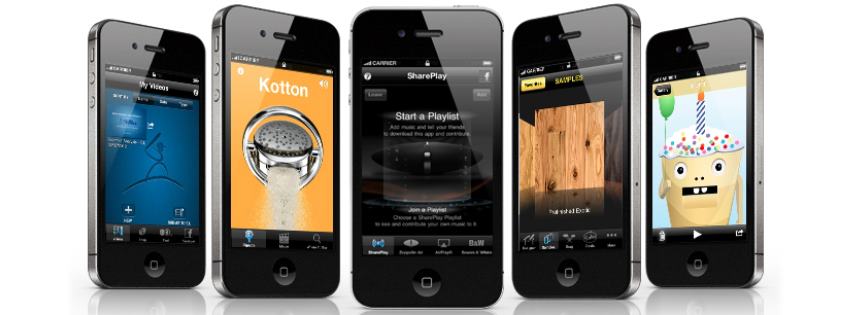
Six points of wisdom
For companies seeking to
Increase engagement
by Tim Aaron
Aurnhammer Philosopher and Social Media Strategist
1. Mobile is the new, engaging space in which to advance your brand’s presence
“‘Mobile is the new face of engagement,’ Mr. Schadler [Principal Analyst at Forrester] said. ‘Businesses should stop thinking about it as a small Web site on a tiny computer, and start thinking about mobile as being deeply embedded systems of engagement.’”[1] (Brian Chen: New York Times)
“One billion consumers will have smartphones by 2016. US consumers alone will own 257 million smartphones and 126 million tablets. Apple, Google, and Microsoft will be the software platform for more than 90% of smartphones and tablets worldwide.”[2] (Ted Schadler and John McCarthy: Forrester)
2. Your consumers expect your brand to have a mobile presence
“Your customers expect you to have a first class app available on every platform (Android/iPhone/Windows Mobile/Blackberry) that will allow them to interact with your brand as well as make purchases. The mall space has blown open and shopping has become intimate, mobile and always open for business.”[3] (Irina Kalonatchi: BettiBlue B2B Brand Management)
3. Mobile apps allow your brand to engage consumers dynamically, anytime, anywhere
“When done right, push notifications enable a brand to socialize with its best connected and engaged customers anytime, anywhere.”[4] (Brent Hieggelke: Mashable)
“Geofence programs allow an administrator to set up triggers so when a device crosses a geofence and enters (or exits) the boundaries defined by the administrator, an SMS or email alert is sent.”[5] (Margaret Rouse: TechTarget)
4. People are purchasing on smartphones like never before
“American consumers spent a healthy $25 billion via mobile transactions during 2012, an 81% rise on 2011. Along with social networking, gaming and emailing, shopping has become one of the top mobile device activities.”[6] (Helen Leggatt: BizReport)
“Because of the rapid adoption rate of tablets & smartphones, eCommerce will continue to grow on the mobile platform… The percentage of mobile shoppers will only increase in the coming years.”[7] (Kristina Knight: BizReport)
“Consumers use their smartphones at many different points in their purchase path. 41% of those who use their mobile phones to help with shopping said they made a purchase directly on their smartphone. 46% said they researched an item on their smartphone then went to a store to make the purchase. 37% said they researched an item on their smartphone then made the purchase online.”[8] (Google)
5. Mobile applications allow for context-aware engagement with consumers, which can be tailored to their wants and needs at the moment they are making purchasing decisions.
“A geofence is nothing more than a virtual perimeter for a geographic area. Simply put, newer location-based applications enable users to build virtual fences around areas of interest. Those fences can be static or dynamic in nature, and possess properties that trigger behaviors such as notifications and automatic location updates upon zone entry or exit.”[10] (Jennifer Van Grove: Mashable)
“Mobile is the manifestation of a much broader shift to new systems of engagement. These systems of engagement help firms empower their customers, partners, and employees with context-aware apps and smart products. To remain vital in this business technology reformation, CIOs must step up and work with other executives to establish an ‘office of the chief mobility officer’ to implement an enterprisewide mobile strategy.”[11] (Ted Schadler and John McCarthy: Forrester)
6. Mobile apps have proven to have positive results for many companies in the past
“Walgreen [is] an example of a business that has greatly benefited from its app. The pharmacy company said that 40 percent of its online transactions came from its one-year-old mobile app, where the most active customers are tapping through to shop, order prescription refills or find nearby stores to get flu shots.”[12] (Brian Chen: New York Times)
“In addition to its popular Android app, Domino’s has also seen success with its iPhone and iPod touch app, which achieved $1 million in total sales in just 28 days, and just three months after its release, the app achieved more than $1 million in sales in a single week.”[13] (Rimma Kats: Mobile Commerce Daily)
